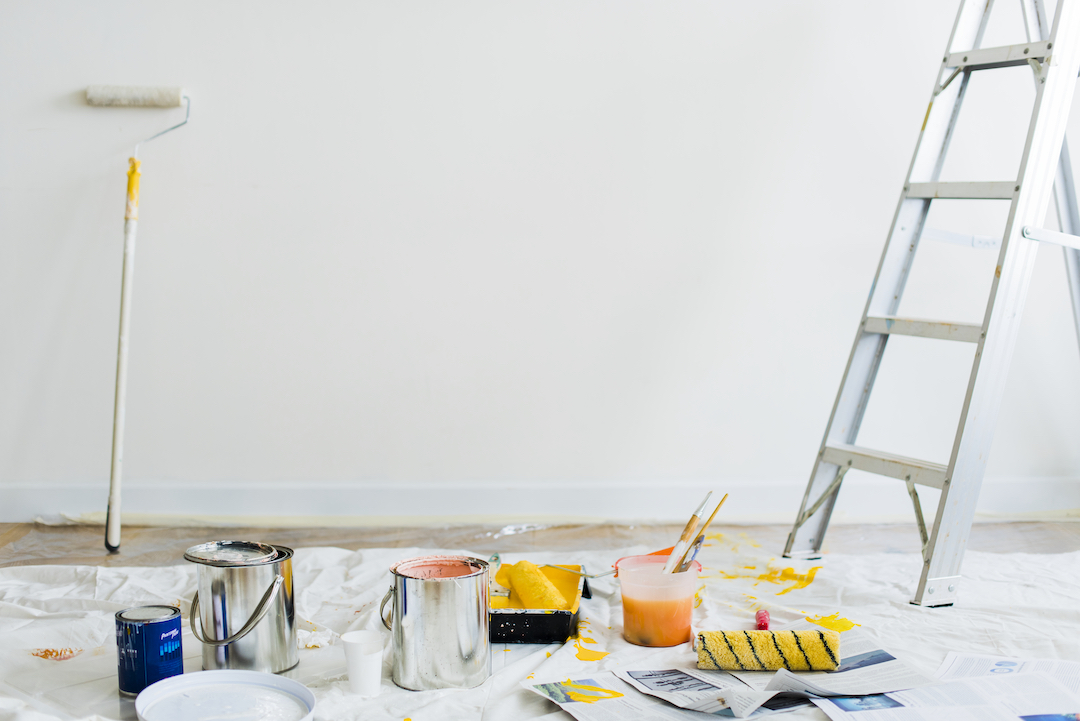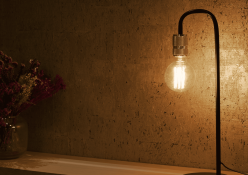So, you’ve decided to repaint a space in or outside your home, but have no clue where to start or what type of paint you need. You call in the professionals, but still have no idea what they mean when they ask if you want a satin or high gloss finish. We’ve broken down the most-used paint jargon to help you with your next painting endeavour – whether it’s on your own or with some expert help.
Types
More than simply picking a shade (and we know how tough that can be), the type of paint you choose will depend on what area you’re painting, whether it’s inside or outside, and what kind of finish you want for the space. Here are some of the top choices:
Acrylic
This is the most common type of paint you can use. It’s water-based, quick-drying, and great for walls, ceilings and even the outside of your home.
Enamel
Enamel is a slightly harder paint that produces a smooth finish. It’s available as both oil-and water-based, and is ideal for painting your trims.
Gloss
The level of gloss for your paint finish all comes down to how shiny you want it to be. The various finishes come in high gloss, semi-gloss, low sheen, satin, eggshell and matt.
Preparation
Before getting down to the nitty-gritty of painting, it’s important to prepare the surface that you wish to paint. These are the most common ways to do so:
Sanding
Use sand paper or an abrasive tool to remove paint or rust before applying
a new coat.
Binder
A type of paint that is used to cover powdery surfaces.
Primer
This is a base coat that is applied before the paint to help set the foundation and allow the paint to apply and set.
Adhesive promoter
This is a type of primer that is used on surfaces that are typically difficult to paint, such as tiles or laminate.
Etching primer
This particular primer works as a two-in-one by protecting the surface from corrosion, while acting as a primer for the paint.
Stain blocker
A primer that is specifically used to cover stains such as watermarks.
Coat
A layer of paint, primer or sealant that is applied to a surface.
Base coat
The pigmented paint that goes over the primer, followed by a clear coat or sealant.
Sealer
The sealer can often be applied as a primer, after the primer or before a topcoat. Its job is to promote adhesion and prevent any coats from soaking into each other.
Methods
Now that you’ve prepped and primed, it’s time to start painting.
Cut in
This is the technique of using a brush to paint the outer trims, corners and edges of the wall where a paint roller wouldn’t be able to reach.
Rolling
Using a roller to paint over the larger surface area of the wall.
Lay off
After a fresh coat of paint, painters will often go in with a roller again (free of paint) to smooth out any runs or drips. The key is to lay off in the same direction that you painted.
Re-coat time
The time a coat needs to dry before going in with another coat.
Touch dry
This is in reference to when the paint is not wet to the touch, but still needs some time to set.
Baking
When you apply heat to the finished paint so that it will dry quicker.
Tools
Brushes
Bristles with handles that come in various sizes and compactness. Generally, bigger and wider brushes are ideal for acrylic paint, while fine bristles with a longer handle are better for enamel paint.
Roller
A round tool with fabric used to roll paint on to a surface. Investing in a good-quality roller will ensure better paint application and less fibre loss.
Stirring stick
A wooden tool used to mix the paint to ensure there’s no separation of the binders and pigments before use.
Nap
The length of the fibres on a paint roller is called the nap. Opt for a long nap when dealing with rough or textured surfaces, a medium nap is better for matt or low sheen finishes, and a short nap for high gloss.
Paint tray
This is a plastic tray that holds the paint. This tray often has a raised or textured section to coat the roller in paint.
Words: Taryn Wilson | Photography: Freepik







